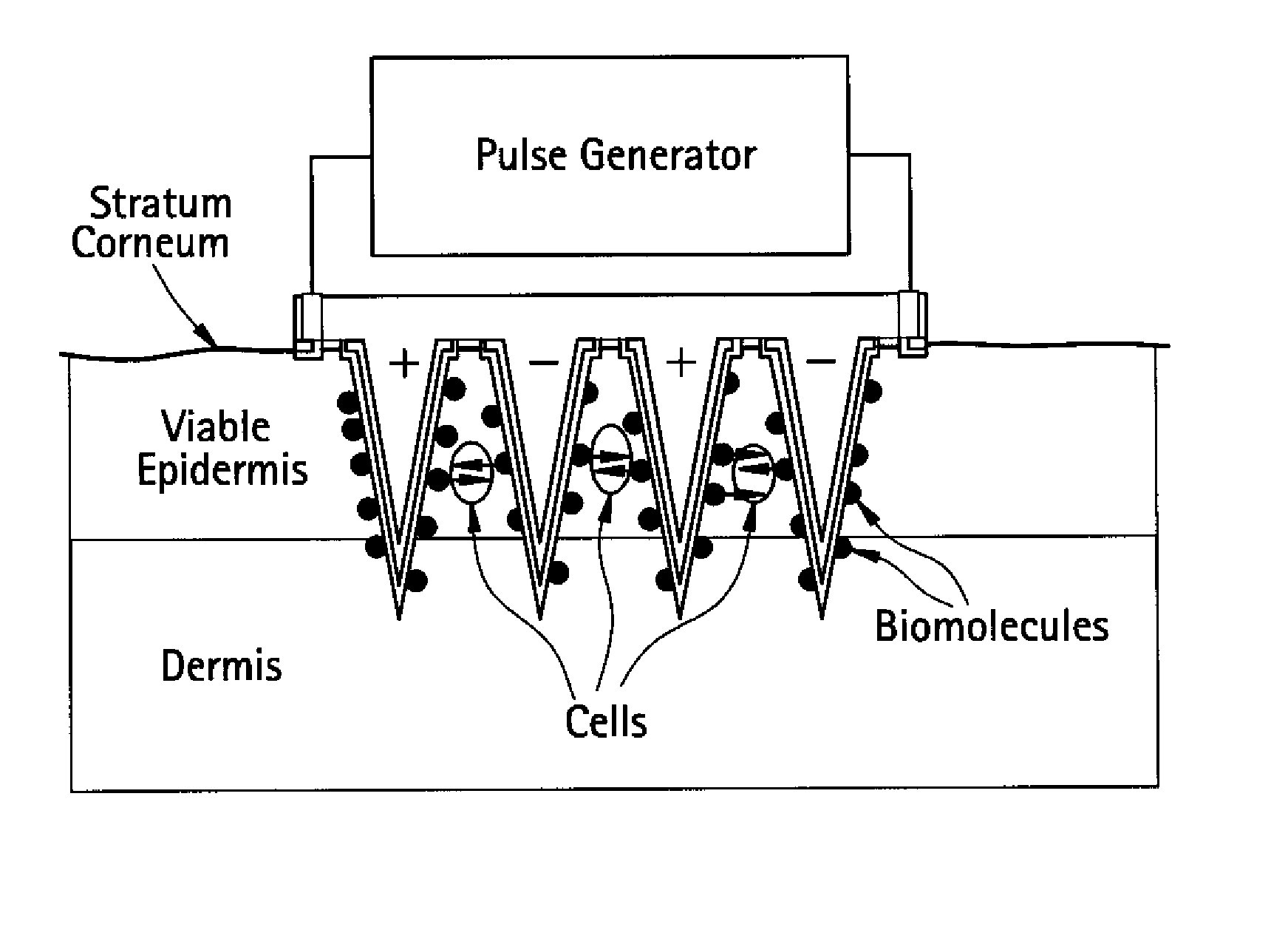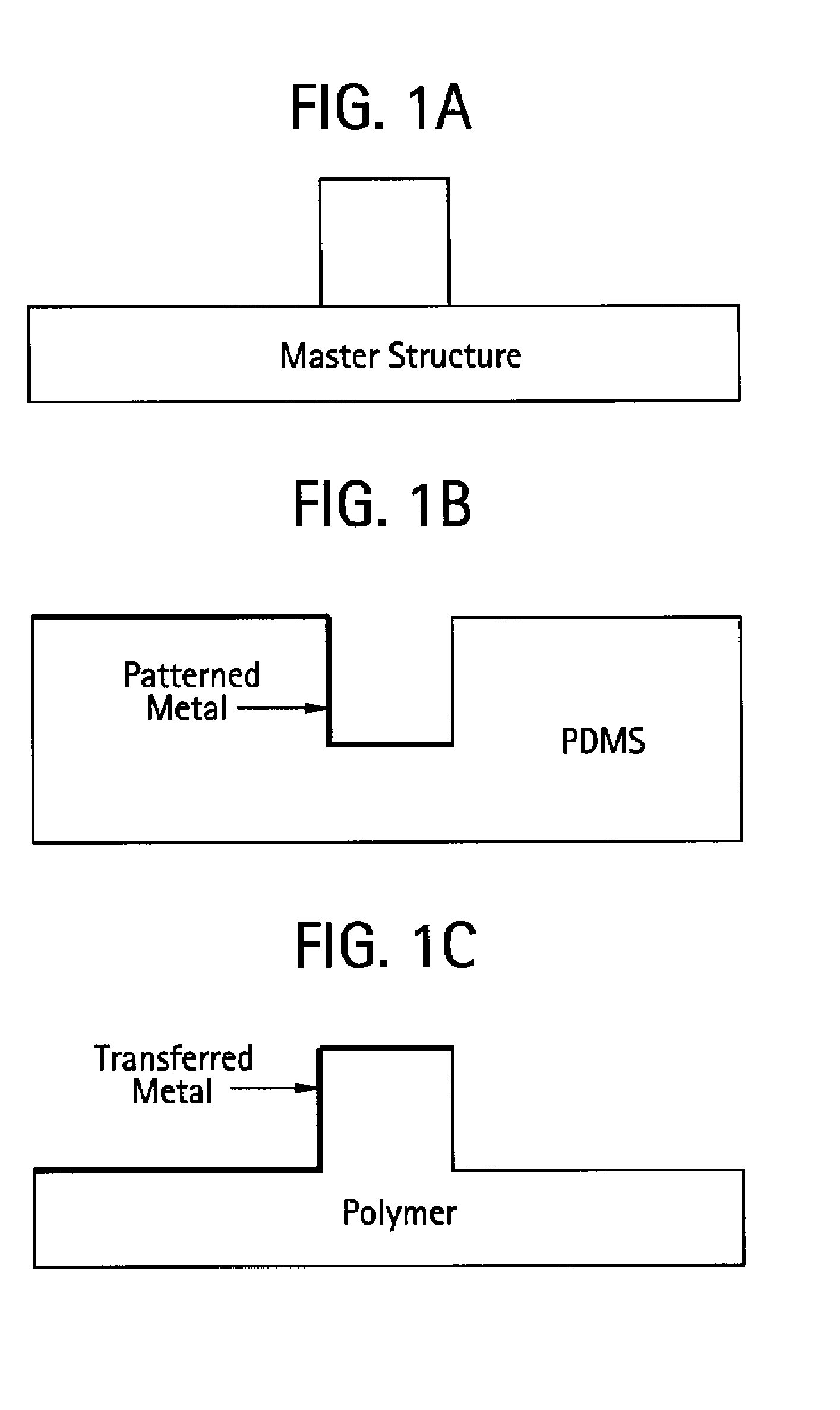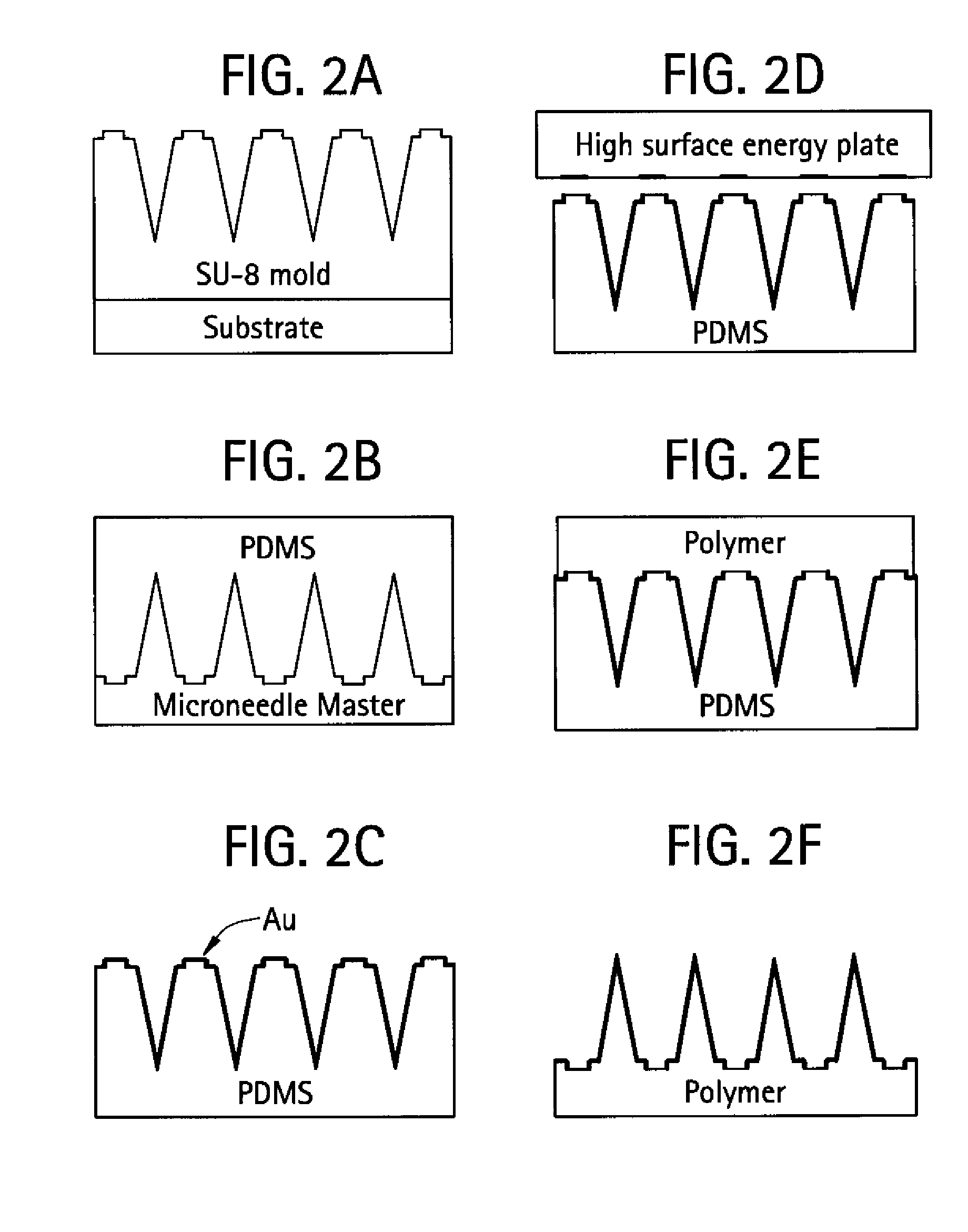Method for Making Electrically Conductive Three-Dimensional Structures
a three-dimensional structure and electrically conductive technology, applied in the field of micro-scale structures, can solve the problems of inability to scale to larger production, inability to make larger-scale production, and additional challenges in patterning high-aspect-ratio three-dimensional structures
- Summary
- Abstract
- Description
- Claims
- Application Information
AI Technical Summary
Benefits of technology
Problems solved by technology
Method used
Image
Examples
example 1
Microneedle Fabrication
[0063] A microneedle device including a 16×16 array of electrically active microneedles was fabricated with adjacent microneedle rows electrically isolated. The height of the microneedles was 400 μm, bottom diameter was 100 μm, and pitch between microneedles was 250 μm.
[0064] The microneedle device was fabricated by mold replication from a micromachined master. To fabricate the master structure, SU-8 was spun on a glass substrate bearing an array mask pattern, baked, and then exposed from the backside to form the tapered needle structure. The microneedles were sharpened by RIE etching. A PDMS (polydimethylsiloxane) mold was copied from the master (FIG. 6A) and a PMMA (polymethylmethacrylate) microneedle array (FIG. 6B) was formed by solvent-casting and then released from the mold.
[0065] The PMMA was prepared from a PMMA powder (MW=75,000, Scientific Polymer Products Inc., USA) dissolved in ethyl 1(−)-lactate (Acros Organics, USA). Due in part to the reducti...
example 2
Mechanical Strength of Microneedle Electrodes
[0068] The microneedle electrodes prepared in Example 1 were analyzed to determine whether their mechanical properties were sufficient for insertion into the skin. The yield stress of the microneedle array to an axial load was determined by using a force-displacement testing station (Tricor Systems, USA). The microneedle array was attached to the specimen holder of the force-displacement test station and then pressed against a rigid metal surface at a rate of 1.1 mm / s. Stress versus strain curves were then extracted from the measured force vs. displacement data. The failure force of the microneedle array also was determined from the force versus displacement data by correlation to a sudden drop in measured force, which represents the failure point. The microneedle array was examined under microscope before and after the test to determine the mode of failure.
[0069] For the solvent-cast PMMA microneedle array, the average failure force pe...
example 3
Electroporation of Microneedle Array
[0072] To test the electroporation ability of the microneedle array, an in vitro red blood cell (RBC) lysis assay was performed to quantify the electroporation effect. Approximately 20 ml of bovine blood in alsevers anticoagulant (Rockland Inc., USA) was measured into a 50 ml polypropylene centrifuge tube. Phosphate buffered saline (PBS) was added to the tube which was then centrifuged at 236 G for 10 minutes. The supernatant was discarded and three 20 ml PBS washes were conducted, the supernatant was discarded, and a resultant RBC pellet was formed.
[0073] The microneedle array was affixed to a surface with the microneedles projecting upward. The array was connected to electrical circuitry to provide a controlled electroporation pulse with an exponential decay waveform (FIG. 7). For each electroporation experiment, 25 μl of concentrated RBC pellet was pipetted onto the microneedle array. Three different peak voltage levels of 53, 108 and 173 vol...
PUM
| Property | Measurement | Unit |
|---|---|---|
| thickness | aaaaa | aaaaa |
| temperature | aaaaa | aaaaa |
| thicknesses | aaaaa | aaaaa |
Abstract
Description
Claims
Application Information
 Login to View More
Login to View More - R&D
- Intellectual Property
- Life Sciences
- Materials
- Tech Scout
- Unparalleled Data Quality
- Higher Quality Content
- 60% Fewer Hallucinations
Browse by: Latest US Patents, China's latest patents, Technical Efficacy Thesaurus, Application Domain, Technology Topic, Popular Technical Reports.
© 2025 PatSnap. All rights reserved.Legal|Privacy policy|Modern Slavery Act Transparency Statement|Sitemap|About US| Contact US: help@patsnap.com



